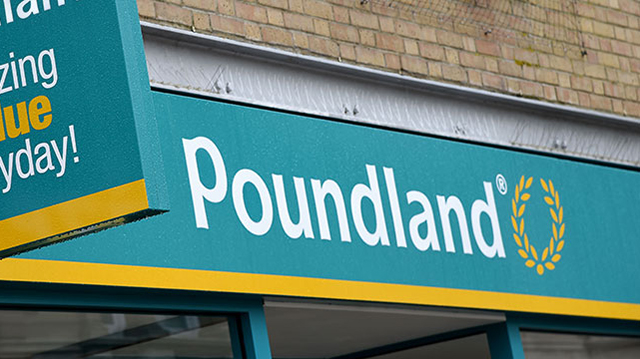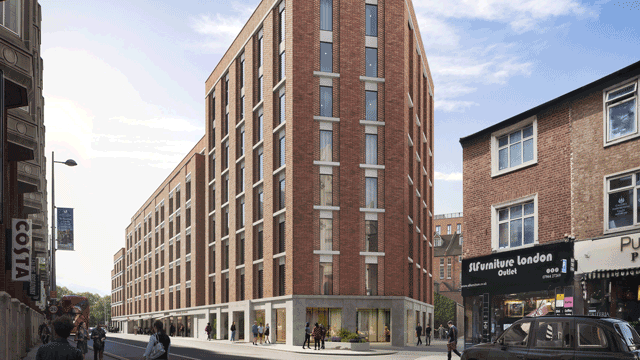“My client is Mother Earth. Whatever company I am at, ultimately, I work for her.”
Three months into her role as head of ESG consultancy at the biggest design firm in the world, Juliette Morgan is under no illusions as to who her boss is. Gensler might be a real estate giant with more than 1bn sq ft under design across the globe, but that globe is an entity unto herself. And while we are on the subject of this terrestrial management structure, it is worth pointing out that Mother Earth isn’t just Morgan’s boss. We are all answerable to her and, arguably, those in the real estate sector more than most.
“If we stopped at each design stage review and assessed projects through the lens of ‘would the Earth vote for this?’ versus what level of accreditation we are going for, we would potentially make different and better decisions,” says Morgan.
As a concept, this sort of self-enforced check-in with what Morgan refers to as our “earth client” makes perfect sense. In reality, such bold and explicit spirituality could fall on some purposefully deaf ears in the more traditional echelons of the real estate world. But Morgan is not to be underestimated. If anyone can advocate evocatively and convincingly for the power of transcendent thinking while also tackling a job heading the new climate action division for a behemoth of a design giant, it’s her.
The scale of the challenge is not lost on her, she says. But neither is the opportunity. With a career in real estate that spans two decades and senior roles at the likes of Cushman & Wakefield and British Land under her belt, Morgan has a good idea of what she is up against. Above all else, she has faith. She firmly believes that, in the main, the industry’s views on ESG and the future of our planet are more productive and forward-thinking than ever. That doesn’t mean humans aren’t still doing, in her words, “a lot of stupid shit.” But with the right understanding and education, she believes the industry is on the cusp of turning a vital corner in the battle against, and adaptation to, climate change.
Here, Morgan discusses the immense power of inaction, the value of low-impact materials and the importance of asking ourselves “what am I here for?” on a regular basis.
Depth of experience
There is no question that Morgan’s stance errs on the side of the spiritual. But more fool anyone who assumes this dampens the corporate instincts that saw her rise through the ranks to become head of sustainable development at British Land and, prior to that, a partner at Cushman & Wakefield within three years of joining the business.
With 20 years’ experience in real estate across brokerage, development and government, the move to Gensler was a deliberate next step. Not only is the practice in prime position to wield real power due to its size – it works with 3,500 clients across 50 locations worldwide – but is taking its approach to ESG very seriously. Morgan’s role includes heading the practice’s newly launched global climate action and sustainability practice area which will support the business’s commitment to be net zero on all projects by 2030. Her team will also share findings and collaborate with the wider industry on how solutions can be implemented “because climate change isn’t a Gensler problem, it’s an everybody problem”.
On top of Gensler’s influence as a real estate giant, a role in architecture and design at this level brings a degree of sway over future development and redevelopment. When it comes to ESG, says Morgan, being positioned at the start of the construction process maximises influence exponentially. “All carbon gets saved in design,” she says. “Once you have started building, it’s already done. Now that sustainability professionals are being introduced on projects at design stage, the outcomes for buildings are changing dramatically. In fact, the principles of design are changing by having sustainability in the room from the outset.”
And there is one design principle climbing up the agenda that Morgan advocates for vocally and vehemently: doing nothing.
Maintain the status quo
Inaction in the face of a spiralling climate crisis might sound counterintuitive, irresponsible even. But context is everything and, ever the mediator between development and planet, Morgan explains her stance.
“One of the most significant ways cities and businesses will be able to fulfil their commitments to carbon neutrality is to do nothing and explore alternatives,” she says. Effectively stepping back, perhaps sacrificing a desired aesthetic, and leaving something as it is if that happens to be the most carbon-neutral choice.
“Let’s say there is a developer who wants to refurbish a building but it doesn’t like some of the materials already there. So it wants to take them off, put them on a lorry, take them somewhere else, brush them up, bring them back and reuse them to ‘do the right thing’. But actually, the right thing would be to say ‘leave it alone’. Don’t take them off, don’t stick them on a diesel-powered lorry and don’t brush them up. Championing things looking the same when there is a good reason for it will be critical to how we achieve real change.”
She is the first to concede this won’t be an easy mindset shift. That doesn’t make it any less of a crucial one. “As designers and developers, we are so aesthetically led,” she says. “But step one of addressing carbon neutrality is asking what we can leave alone and how we can learn to appreciate what we have left alone. Step two is to build less and maximise existing assets and then, if we are going to build, redevelop, design or maximise anything, do it with low-carbon materials and design for deconstruction.”
Is designing for deconstruction something the industry is ready to embrace? Perhaps not. But she thinks much of the resistance comes down to hubris. “I spoke to someone recently who said ‘but this building is perfect. It will be here for the next 100 years.’ Well, I question the right of us to make decisions over carbon for the next seven generations by our ability to design perfect buildings. If we were able to build perfect buildings then there wouldn’t be a reason to demolish a single one. Ever. So we need to prioritise refurb. And that brings us back, once again, to materials.”
More than statistics
Here Morgan refers to the “unseen” carbon impact of our buildings – “the cat-A fit-out that gets put in and taken straight back out, the carpet that gets replaced every six or seven years”, for a start.
With so much internal upheaval occurring, even in the very early days of a building’s life cycle, something as simple as a carbon-neutral materials library could make a significant difference to what Morgan describes as a building’s “residual value”.
“Buildings should be seen as more than physical bank accounts,” she says. “What if they were materials bank accounts too? At the moment, most buildings don’t have residual value because it is really difficult to recover materials from them without turning them into sites. That adds in a lot of cost. One of the fundamental changes we can make is to attribute value to an existing building based on the longevity or deconstruction credentials of the materials inside.”
Naturally, the value of those materials increases the more efficient and carbon neutral they are. And materials libraries like the one Gensler is working on to identify the best, most efficient materials to deploy could become the reference points the industry needs to make the best choices – ethically and economically. Gensler’s library, says Morgan, will be made public. “We will share it because we are much better working together. We want to make it available to everyone.”
The pressure to change, adapt, collaborate and act to address the climate crisis is building fast. Whether the driving force is ethical, financial or both, the heat is literally on. The statistic that the industry is responsible for 40% of the world’s carbon emissions is well and painfully documented. Characteristically, Morgan has a different take on that figure.
“If we [real estate] are 40% of the impact of carbon, let me put that to you another way. That’s four out of 10 species that have collapsed which we must take responsibility for. That’s four out of 10 climate migrants that live with us. That’s four out of 10 climate deaths that also live with us. Forty per cent is just a stat. But when it’s real and personal and it represents people moving or species dying, it hits home a bit more. It certainly does for me.”
Position of responsibility
That’s the thing about Morgan. Just when you think you are talking business, she reminds you there is so much more to her than corporate strategy. “In the back of our minds we should all be asking ourselves ‘what I am here for?’” she says. “Because we are the adults now. We have the positions of responsibility. This is our life and our lifetime. This is it. So without depressing everyone totally about the reality of their own mortality, we should all hold that question at the backs of our minds: ‘what am I here for?’ Oh, and humans need to stop doing stupid shit.” Spiritual until the very last.
To send feedback, e-mail emily.wright@eg.co.uk or tweet @EmilyW_9 or @EGPropertyNews











